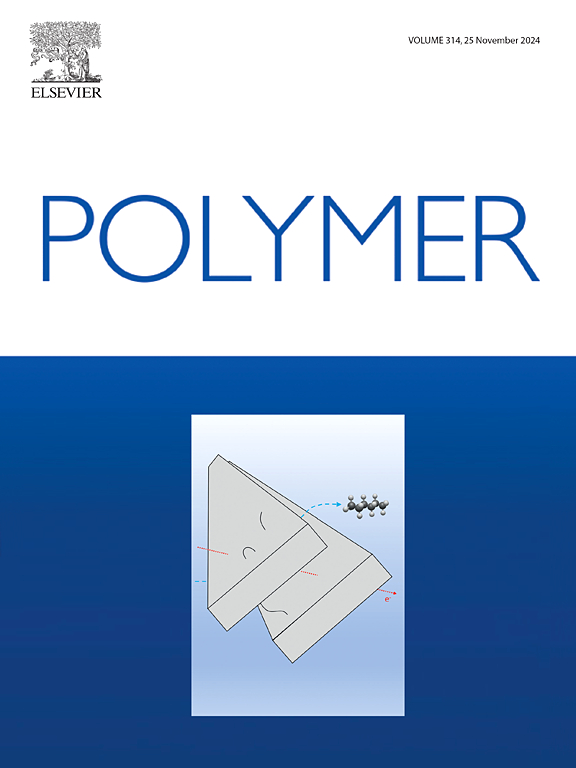Single-step fabrication of high-performance chlorinated polyethylene /CuO nanocomposites for energy storage applications
IF 4.1
2区 化学
Q2 POLYMER SCIENCE
引用次数: 0
Abstract
The development of flexible dielectric materials with superior energy storage capabilities is essential for electronic applications and the next generation electric power systems. This study employed a one-step two-roll mill mixing technique to fabricate chlorinated polyethylene (CPE) nanocomposites reinforced with copper oxide (CuO) nanoparticles, specifically engineered for energy storage applications. UV–visible spectroscopy indicated a redshift in absorbance, with the nanocomposite containing 7 wt% CuO displaying the highest refractive index and the lowest optical bandgap energy. FTIR analysis confirmed the bonding interactions between CuO and CPE while XRD verified the presence of crystalline CuO phase. FE-SEM and HR-TEM images demonstrated a uniform surface morphology and homogeneous nanoparticle dispersion of CuO nanoparticles at a 7 wt% loading, while agglomeration became apparent at higher concentrations. Thermal analysis using DSC and TGA revealed enhanced glass transition temperature and thermal stability upon incorporation of nanoparticles. The AC conductivity, dielectric constant, and modulus of the nanocomposites were evaluated across varying temperatures and frequencies, showing a consistent increase with rising nanofiller content. These properties reached their peak at 7 wt% CuO loading, where AC conductivity and dielectric constant values were approximately 13.4 and 3 times higher, respectively than those of pristine CPE. Additionally, mechanical properties were also significantly improved with CuO reinforcement. The nanocomposite containing 7 wt% CuO exhibited outstanding mechanical performance, with tensile strength increasing by 106.7 %, impact strength by 48.9 %, and hardness by 15.6 %. These results underscore the potential of CPE/CuO nanocomposites as advanced electroactive materials for future energy storage applications.


求助全文
约1分钟内获得全文
求助全文
来源期刊

Polymer
化学-高分子科学
CiteScore
7.90
自引率
8.70%
发文量
959
审稿时长
32 days
期刊介绍:
Polymer is an interdisciplinary journal dedicated to publishing innovative and significant advances in Polymer Physics, Chemistry and Technology. We welcome submissions on polymer hybrids, nanocomposites, characterisation and self-assembly. Polymer also publishes work on the technological application of polymers in energy and optoelectronics.
The main scope is covered but not limited to the following core areas:
Polymer Materials
Nanocomposites and hybrid nanomaterials
Polymer blends, films, fibres, networks and porous materials
Physical Characterization
Characterisation, modelling and simulation* of molecular and materials properties in bulk, solution, and thin films
Polymer Engineering
Advanced multiscale processing methods
Polymer Synthesis, Modification and Self-assembly
Including designer polymer architectures, mechanisms and kinetics, and supramolecular polymerization
Technological Applications
Polymers for energy generation and storage
Polymer membranes for separation technology
Polymers for opto- and microelectronics.
 求助内容:
求助内容: 应助结果提醒方式:
应助结果提醒方式:


